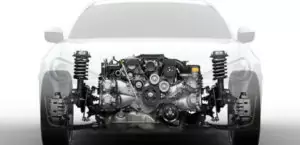The 2.0-liter Hyundai G4NG or Sonata 2.0 GDi Hybrid engine was produced from 2015 to 2020 and was installed on the hybrid versions of the 7th generation Sonata and the similar 4th generation Optima.
The Nu family includes engines: G4NB, G4NA, G4NC, G4ND, G4NE, G4NH, G4NG, G4NL, G4NN.
The engine was installed on:
- Hyundai Sonata 7 (LF) in 2015 – 2019;
- Kia Optima 4 (JF) in 2016 – 2020.
Specifications
| Production years | 2015-2020 |
| Displacement, cc | 1999 |
| Fuel system | direct injection |
| Power output, hp | 154 (205 with electrical component) |
| Torque output, Nm | 190 (375 with electrical component) |
| Cylinder block | aluminum R4 |
| Block head | aluminum 16v |
| Cylinder bore, mm | 81 |
| Piston stroke, mm | 97 |
| Compression ratio | 13.5 |
| Features | Atkinson cycle |
| Hydraulic lifters | yes |
| Timing drive | chain |
| Phase regulator | Dual CVVT |
| Turbocharging | no |
| Recommended engine oil | 5W-30 |
| Engine oil capacity, liter | 4.3 |
| Fuel type | petrol |
| Euro standards | EURO 6 |
| Fuel consumption, L/100 km (for Hyundai Sonata PHEV 2017) — city — highway — combined |
4.9 4.5 4.8 |
| Engine lifespan, km | ~250 000 |
Disadvantages of the Hyundai G4NG engine
- The main problem is not reliability, but the lack of necessary specialists and spare parts;
- On specialized forums, most often they complain about all sorts of glitches in electrical;
- The catalytic converter is close to the cylinder block, so scuffing is quite possible;
- Often the generator fails, which is equipped with its own cooling.






